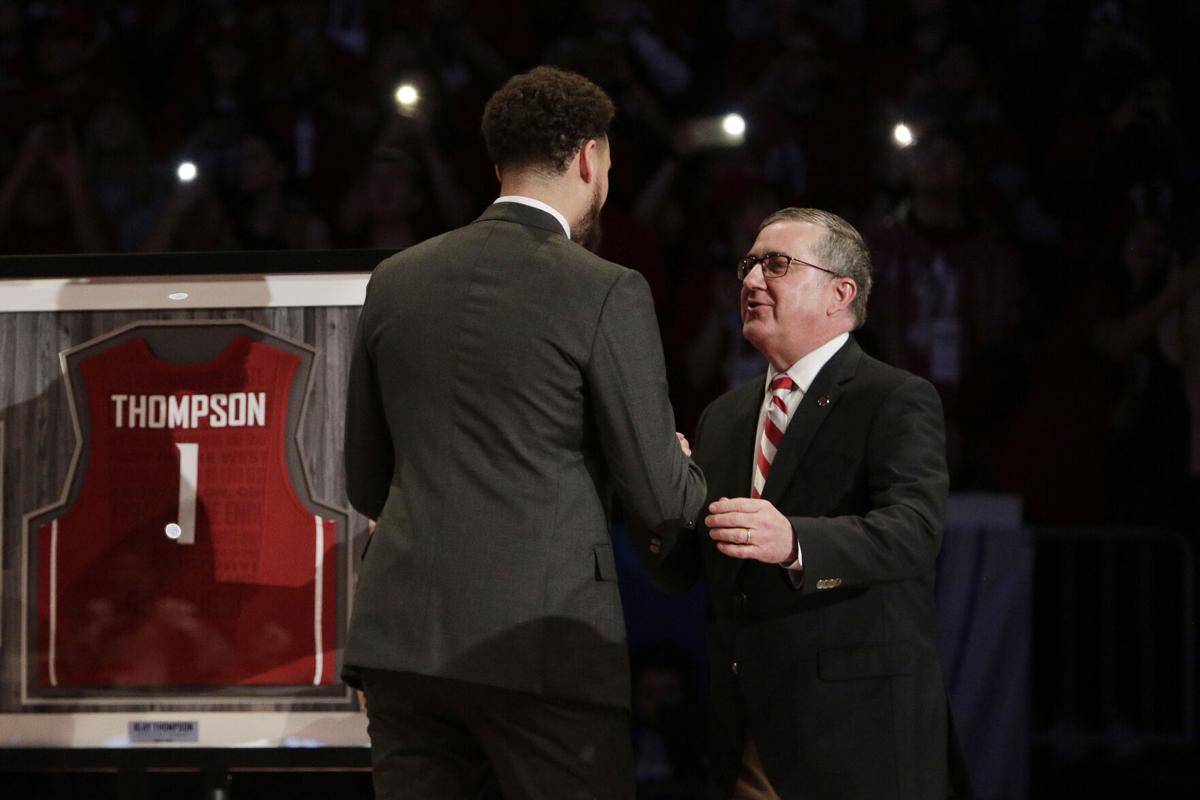One of the Pac-12’s most influential presidents on Tuesday took a measured approach to expanding the conference, noting that “institutional fit” and “closing the revenue gap” would be key to evaluating potential new members.
“If we add teams just to try to keep up with somebody else but those teams don’t grow our revenue base, do we really need to add them?” said Washington State’s Kirk Schulz, one of three presidents on the Pac-12 CEO Group’s agenda-driving executive committee.
But Schulz, who also represents the Pac-12 on the College Football Playoff’s powerful Board of Managers, was anything but reserved in his assessment of the SEC’s decision to add Texas and Oklahoma.
“What the SEC has done is unify the other conferences in a way that nothing else could have, in terms of working together,” Schulz told the Pac-12 Hotline.
“A lot of people now are very concerned about the predatory nature of the SEC. More presidents are talking. There’s a lot of back and forth.”
The SEC declined to comment on Schulz’s remark.
(Texas president Jay Hartzell said during a state senate hearing earlier this week that the school reached out to the SEC but considered joining other conferences, according to the Fort Worth Star-Telegram.)
Schulz is uniquely qualified to assess the Pac-12’s strategic position against the backdrop of realignment. In addition to his role on the conference’s executive committee and the CFP board, he was a university president in the Big 12 (Kansas State) during the expansion cycle a decade ago, when the conference lost Colorado to the Pac-12, Nebraska to the Big Ten and Missouri and Texas A&M to the SEC.
Since news broke last month of Texas and Oklahoma jumping to the SEC, Schulz has spoken to numerous university presidents — both inside and outside the Pac-12 — about potential responses in various regions and leagues.
“I sensed that in the aftermath of the announcement, there was some panic,” he said. “But I don’t think that’s the case any longer.
“I have talked to presidents around the country, and what I’ve found is that people are taking a step back and taking a deep breath. They’re saying, ‘Let’s not rush into it and make a hasty judgment.’
“Nobody is on a deadline. At the same time, we don’t want to have our head in the sand and just see where everything is one year later and hope it worked out for the best.”
Schulz learned from his tenure at Kansas State that internal alignment is essential for any conference during an expansion wave.
“You have got to hold serve at home and make sure all the current members feel good about the conference financially and the direction it’s headed,” he said. “You can’t have death by 1,000 cuts, where you lose one member here, and then another there.”
When asked specifically whether the Pac-12’s current membership is satisfied, Schulz said:
“People are saying they like the affiliation that we all have geographically and from the standpoint of being research institutions. All the conversations I’ve had have been really positive, that this is a good footprint. But we need to ask ourselves where we’ll be as a conference in five years.”
For that reason, Schulz reached out to new Pac-12 commissioner George Kliavkoff to offer advice in the wake of the Texas and Oklahoma news.
“I called George and told him that I’ve been through it before. I wanted to make sure we weren’t sitting on the sideline. And he said, ‘I have six options for us.’
“He’s thinking deeply about these things. Should we be in the acquisition mode? Should we look to add members? Should they be football-only members? Should we consider a schedule alliance?
“I am so glad George is at the helm. We’re not resting on our laurels. He’s looking at options and what we can do to maximize our football brand. He’s the right leader at the right time.”
Kliavkoff declined to comment on the specifics of his “six options” but has said the conference is considering all strategic possibilities. It has received “significant inbound interest” from schools looking for a new home, Kliavkoff said last week, but has “a high bar to entry.”
(Kliavkoff also declined to comment on his Tuesday meeting with Big 12 commissioner Bob Bowlsby, which was first reported by The Athletic, on ways the conferences could work together.)
Schulz echoed Kliavkoff’s approach to potential expansion: The Pac-12 isn’t interested in adding members simply as a response to the SEC’s move.
“All the conversations I’ve had are really focused on closing the revenue gap,” he said. “That still drives a lot of the decision-making. You could pick schools that make us a 16- or 18-team conference, but the next question is, ‘OK, how does that close the revenue gap?’”
Pac-12 schools receive far less in annual conference distributions — tens of millions less — than their peers in the SEC and Big Ten.
“The second thing I hear a lot about is institutional fit,” Schulz added. “It’s not about a particular state. It’s more about similar styles institutionally. We have a major brand presence on the West Coast. If we add schools from different geographic regions, does that fit well?”
Schulz said the SEC’s expansion plans don’t change the Pac-12’s view of playoff expansion.
“After the Texas and Oklahoma news, there was some pushback and some thought that maybe we don’t need to expand. But the CFP still needs to expand to create more opportunities for more teams. There is more opportunity for Pac-12 schools with expansion with 12 teams than with four. Does it need tweaking? Perhaps. But I think there’s broad consensus that we need to move forward.
“I haven’t heard anyone in the Pac-12 footprint who thinks we shouldn’t expand. Look at small-market schools like Washington State and that year we had with Gardner Minshew. What’s our best shot to take advantage of a magical year like that? It’s an expanded playoff.”





